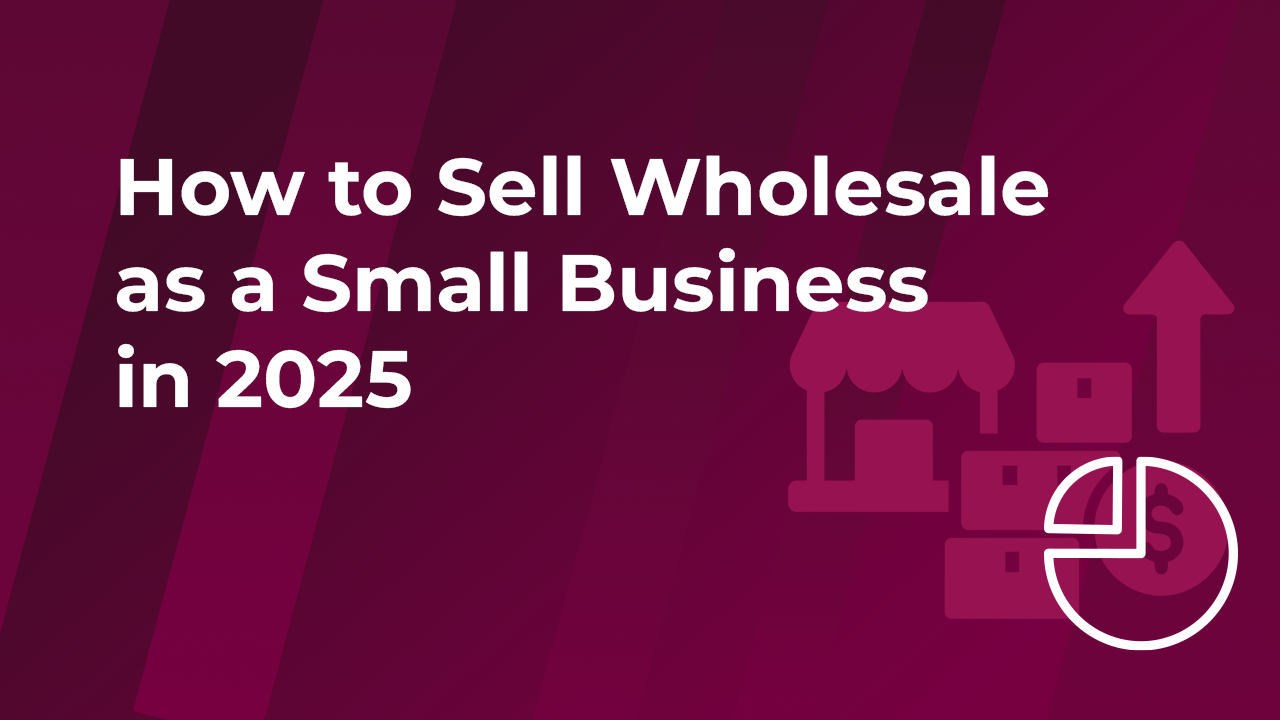Selling wholesale could be a viable option for small businesses looking to expand without putting in double the effort. When you sell your goods wholesale, you sell them in large quantities, usually to other businesses like retailers, rather than one customer at a time. It’s a different way of doing business, but it can lead to bigger orders, more stable income, and long-term partnerships.
We’ll show you the right way to start selling wholesale as a small business. We’ll explain each step in a way that is easy to understand and follow.
And if you’re serious about your business, don’t forget to make sure your website can handle heavy traffic. WPX.net offers fast, safe hosting that is perfect for growing businesses. This way, your site will always be reliable as you grow.
Step 1: Research & Plan Smarter
Before you jump into wholesale, take a step back and do some research. It’s not just about selling more; it’s about selling better. You should be familiar with your market, your competitors, and how your product fits in.
First, learn about your field. Who else is offering products similar to yours? Are they already selling in bulk? How much do they charge? Look for gaps like a missing style, price range, or product type. That’s your chance.
Next, decide who you want to sell to. Are you targeting food shops or specialty grocers? Knowing who your ideal wholesale buyer is can help you decide how to price, package, and promote your product.
Next, make a simple plan for your business. It doesn’t need to be fancy. Just write down your goals, how much product you can make, your revenue goals, and how you’ll get it to buyers. If you plan now, you’ll save time and money later.
Step 2: Legal Setup & Licensing
If you want to sell wholesale as a small business, you’ll need to have a few things in place.
- First, make sure your business is legally registered. That usually means registering as an LLC or other business structure. This protects your personal assets and makes your business look more professional.
- Next, you’ll likely need a resale license (sometimes called a wholesale license or sales tax permit). This lets you buy inventory tax-free if you’re reselling it. Your wholesale buyers can do the same with your products. Contact your state or local government to find out what the exact requirements are.
- Apply for an Employer Identification Number (EIN) if you don’t already have one. You need this number to open a business bank account, file taxes, and hire people in the future. It’s like a Social Security number for your business.
Step 3: Find Suppliers & Set Pricing
If you’re reselling products, you’ll need to source them first. If you’re making your own, you’ll need to find suppliers for the packaging or raw materials.
Select suppliers who consistently provide excellent quality, fair prices, and quick turnaround times. Don’t be afraid to negotiate. You’re buying in bulk, so you’ve got leverage.
Set your wholesale prices once you know your costs. A good rule of thumb is to set the price of your goods at about half of what you would charge for them at retail. Factor in time and a healthy profit margin, too.
You should also choose your minimum order quantity (MOQ). Setting a minimum amount that a buyer must buy helps protect your resources. Ensure it’s feasible for both you and the stores you want to sell to.
Step 4: Set Up Sales Channels
You can’t just set up a wholesale business and forget about it. You need a place to show off your goods and let prospective buyers look around, learn about them, and place orders.
Here are some ways to do that:
- Wholesale pages on your current website that are password-protected
- Use wholesale platforms like Faire, Abound, and Handshake.
- Dedicated catalogs or line sheets for wholesale (in print or PDF)
If you’re going to sell things in bulk on your own website, make sure your hosting can handle extra traffic and load quickly. Buyers in bulk don’t have time for crashes or delays.
That’s when a hosting service like WPX.net can really help. Our hosting services are quick, dependable, and ready for business, so your site will run smoothly no matter how many people are browsing.
Step 5: Logistics & Operations
Your operations must adapt to the increased demand as you begin selling in bulk.
First, decide where you’ll store your inventory. To start, you could use an extra room, a garage, or a small storage unit. You might want to look into warehousing or fulfillment services as you grow.
You will also need a way to track inventory, manage orders, and send invoices. You don’t need to use high-tech tools at first; spreadsheets will work for a while. But in the end, inventory software or order management tools will save you a lot of time.
Lastly, choose how you will ship your wholesale orders. You might need stronger boxes and lower shipping costs than you would for DTC orders. Some wholesalers include the cost of shipping in their prices or offer flat-rate shipping.
Step 6: Sales Outreach & Retailer Relationships
Now comes the fun (and sometimes scary) part: finding and contacting potential buyers.
Make a list of stores that are a good fit for your brand. Think about gift shops, local boutiques, regional chains, or online stores. Look for stores that already sell similar or complementary items.
Keep it simple and personal when you’re ready to pitch. Tell them who you are, why your product would be a good fit for their store, and give them a link to your wholesale information. Don’t send mass sales emails or generic messages. Retailers like it when you are polite and professional.
After securing a buyer, nurture and maintain that relationship. Be on time. Be open. Give small rewards, like letting people see new products before they come out or reminding them when they need to restock. In wholesale, success isn’t just about one big sale; it’s also about getting repeat business from customers who trust you.
Step 7: Marketing & Scaling Wholesale
You still need to market, but in a different way since you’re selling to other businesses. B2B marketing is important:
- Go to trade shows or local markets where buyers shop or network.
- Sign up for wholesale directories or marketplaces
- Connect with people in your field on Facebook groups or LinkedIn communities.
- You can also offer seasonal discounts or free shipping to encourage purchases.
These little things can help you close deals, especially with new customers.
Think about how you’ll grow as your wholesale business grows. Is it possible for you to produce more, hire help, or add new products? The key is to grow steadily without overextending yourself.
Step 8: Managing Risks & Pitfalls
Wholesale can be fun, but it’s not without risk.
One issue is lower profit margins. You need to make sure you’re still covering your costs and making a profit, even when selling at a lower price. Don’t lower your prices just to make a sale.
Another mistake is taking on too much. If you are unable to fulfill a large order from a store, it may damage your reputation. Know your limits, and make sure buyers do too.
Finally, keep an eye on your money and stock. Record what sells, what doesn’t, and when to restock. With so much to manage, even small mistakes can add up fast.
The good news? Clear communication, realistic planning, and steady systems can help you avoid most wholesale problems.
Why Wholesale Makes Sense for Small Businesses
Wholesale isn’t just a small part of doing business. It’s a major part of the retail economy. Around 20% of all retail sales in the United States come from wholesale distribution. That means there are real opportunities out there if you put yourself in the right place.
Selling one item at a time can be quite exhausting. Wholesale changes the rules. You don’t have to chase dozens (or even hundreds) of small sales. Instead, you work with a few buyers who place large orders regularly. It’s a better, more scalable way to grow your business.
1. Bigger Orders = Better Cash Flow
When you sell wholesale, you usually sell many things at once. That means better cash flow, which helps ease money stress and allows you to plan ahead. You’ll also spend less time packing and shipping.
2. Lower Marketing Costs
Direct-to-consumer (DTC) sellers must consistently market to attract attention. It all adds up: ads, emails, and social posts. Wholesale allows you to avoid much of that marketing effort. One strong store order can get your product in front of hundreds of customers with much less effort.
3. Reach New Markets Faster
Retailers already have loyal customers. Selling through them gets your products into places you might not reach alone. It’s a fantastic way to try out new places or audiences without having to open a store or start a big marketing campaign.
4. Builds Brand Credibility
When a store decides to sell your product, it’s like giving it a stamp of approval. It demonstrates that your brand is trustworthy and professional enough to secure shelf space. That can help you get even more customers, both retail and wholesale, and improve your reputation.
5. Scales with Less Stress
Wholesale lets you grow more sustainably. You can make things easier by streamlining production, building strong relationships with fewer customers, and growing steadily instead of trying to keep up with a lot of small orders.
To sum up, wholesale isn’t just for big companies. Done right, it’s a smart, sustainable way for small businesses to grow without burning out.
Conclusion
For small businesses that are ready to grow, selling wholesale can be a major opportunity. You can increase cash flow, reach more people, and grow in an eco-friendly way. The key is to plan, price smartly, and build strong relationships.
Wholesale gives you the structure you need to grow with a purpose. And WPX.net’s reliable hosting keeps your website ready for anything, from new customers to larger orders.
Frequently Asked Questions

First, look for stores that are a good fit for your brand. Send a short, friendly message with a link to your wholesale information. You can also list your products on wholesale sites like Faire or attend local trade shows.
It depends on demand, but niches like home goods, skincare, accessories, and eco-friendly products tend to be more profitable. Make sure your product is high-quality, well-branded, and encourages repeat purchases.
Both have pros and cons. Wholesale often means larger orders with less daily marketing effort. Retail, on the other hand, gives you more control and higher margins. A lot of successful businesses do a little of both.






